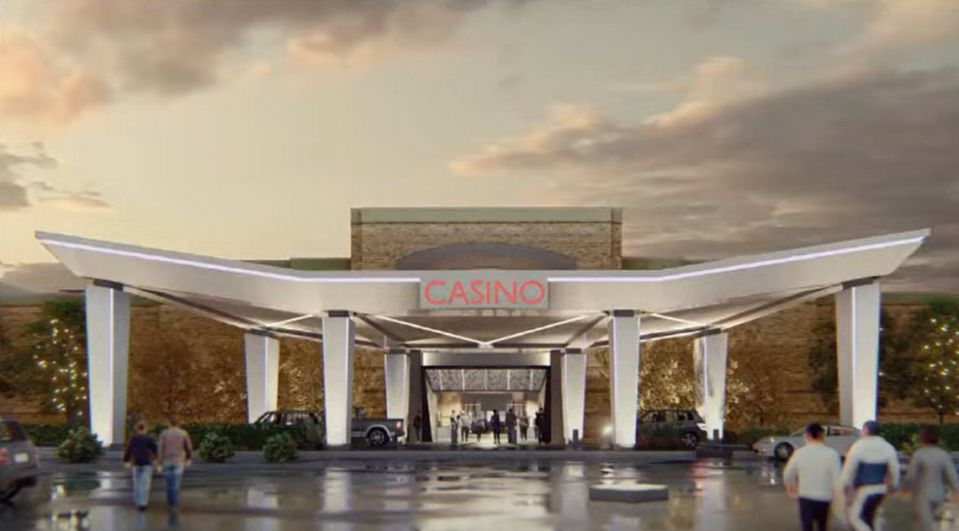The proposed mini-casino in Centre County is running behind schedule. What’s next?
The proposed mini-casino at the Nittany Mall has not had its license approved by the state regulatory agency responsible for overseeing gambling, leaving the project months behind schedule.
The casino is projected to bring in hundreds of millions of dollars and revitalize the mall, but isn’t without its detractors. Some of the most common quips are potential increases in crime, a decrease in nearby property values and gambling addictions.
Here’s where the project stands:
What’s the holdup?
Construction was initially scheduled to begin in the second half of 2021, pending regulatory approvals. That’s proved to be a mixed bag.
College Township greenlighted the project in September. Its approval OK’d reconfiguration of the parking lot, sidewalks and lighting.
“No additional action is required on the part of the township for the project to proceed,” Manager Adam Brumbaugh wrote in an email Thursday.
That left the casino’s developers with two remaining regulatory hurdles: Having its license approved by the Pennsylvania Gaming Control Board and having construction permits approved by the Centre Region Code Administration.
The PGCB hosted one of the two required hearings in August, where the projects developers, a top state lawmaker and business industry leaders discussed the proposal.
The second hearing was expected to take place in the fall in Harrisburg, but that hasn’t happened yet. No date has been scheduled either, PGCB spokesperson Doug Harbach wrote in an email.
The board meets once per month. Its next meeting is scheduled for Jan. 19, but the license won’t come up for approval then, Harbach wrote. That would push a vote on the license to Feb. 23 “at the earliest,” he added.
What happens if the license is approved?
If the roughly $120 million project receives all of the necessary approvals, construction is expected to be completed in about a year. Bally’s, which partnered with Penn State alum Ira Lubert, did not immediately respond to a request for updated timelines.
The license would cap the casino’s size, meaning it wouldn’t be able to have more than 750 slot machines or 30 table games. That’s about one-quarter to one-half the size of most other casinos in the state.
Developers plan to renovate the roughly 94,000-square-foot space that was previously home to Macy’s. A sportsbook, restaurant and bar are part of their plans.
The casino is expected to employ 350-400 full-time equivalent positions.

How much money are we talking?
College Township stands to receive more than $1.6 million during the casino’s first year of operation, according to a consultant hired by the company overseeing the casino. That’d represent a 16% increase of the township’s general fund budget.
If Econsult Solutions’ projections are accurate, the state would receive about $2 million annually in income, sales and taxes.
The company estimated the casino would pull in about $91 million during its first year of operation, and about $116 million during its 10th year.
There’s also an expectation that more businesses could be drawn to the mall, something that’s been seen in similar areas throughout the state. The mall is currently about 50% occupied.
What’s the potential downside?
It’s unclear whether crime might increase or otherwise strain first responders, some of the more common grievances lodged by those who oppose the project.
State College police and Alpha Fire Company administrators each expect the casino to have a negligible effect on their operations.
A study estimated “some impact on EMS,” though Centre LifeLink EMS Chief Kent Knable said he did not anticipate “further capacity challenges.”
What is clear, according to the National Association of Realtors, is the effect a casino has on neighboring property values. The trade association said it’s “unambiguously negative.”
And the Institute for American Values showed people who live close to a casino are twice as likely to become problem gamblers as those who live more than 10 miles away.
For months, area residents have written to the PGCB about the casino, with many in opposition to the plan and citing concerns including crime and impact of gambling addiction on Penn State students and others, according to reports posted to the PGCB’s website.
Those urging the gambling control board to yes on the proposal pointed to the potential revitalization of the mall and a need for more entertainment venues for adults.

 Yahoo Movies
Yahoo Movies 